Are creativity and madness inherently linked? In a word, No! Plenty of creative people are not mad. Is there a statistical association between creativity and some sorts of mental illness or between creativity and some negative emotional states? These are very different questions, to which there seem to be no definitive answers. Nevertheless the "myth of the mad genius" persists, and is so deeply embedded in our culture that it probably would be hard to root out even if there were definitive evidence against it.
The idea that literal madness -- i.e., insanity or psychosis -- and creative genius are linked was, in my view, adequately disposed of by Shakespeare in A Midsummer Night's Dream:
The lunatic, the lover, and the poet,
Are of imagination all compact:
One sees more devils than vast hell can hold,
That is, the madman; the lover, all as frantic,
Sees Helen's beauty in the brow of Egypt;
The poet's eye, in fine frenzy rolling,
Doth glance from heaven to earth, from earth to heaven
And, as imagination bodies forth
The forms of things unknown, the poet's pen
Turns them to shapes, and gives to airy nothing
A local habitation and a name.
Shakespeare clearly differentiates between the artist and the "madman," telling us that a person who is mad "sees more devils than vast hell can hold." The inner experience of psychosis is usually awful. Saying that it is the source of creativity rests on a vast misunderstanding of the impact of literal madness on functional capacity.
Apparently, however, Shakespeare was not persuasive. The myth survived, and in the late 20th century Nancy Andreasen, who is one of the two most cited sources of the "fact" of a link between creativity and madness, set out to explore the relationship between creativity and schizophrenia. To her surprise she found none, but she did claim to find a statistical association between creativity and depression. A few years later, Kay Redfield Jamison, the other most-cited source for the link between creativity and madness, claimed to find a statistical association between creativity and manic-depressive disorder (now known as "bi-polar" disorder).
Judith Schlesinger , a psychologist and authority on jazz, looked carefully at the data that Andreasen and Jamison used to support their claims and reported in an article published in 2009 that the data are simply inadequate to make the case. Andreasen, for example, relied on interviews with only 30 writers and used an idiosyncratic definition of depressive disorder, making it impossible to replicate her study.
Of course, there are plenty of anecdotes about the sadness of comedians, the energetic flights of ideas of some writers, tragic suicides of creative geniuses, and so forth. In addition, because successful art requires a mix of "inspiration and perspiration," the manic-depressive claim makes some intuitive sense. But solid evidence just does not exist.
In his excellent new book Imagine: How Creativity Works, Jonah Lehrer appears to revive the myth of the mad genius, though on close reading he is a bit more careful than that. Like almost everyone who writes on this topic, he cites Andreasen and Jamison. He also reports on several studies that appear to show that people are more creative when they are depressed. In fact, however, what these studies show -- if they show anything at all -- is that many people are more focused and more imaginative when they are in a bad mood. That's interesting, but a far cry from a link between creativity and major depressive or bi-polar disorder.
The myth that creativity and madness are inherently linked is, at best, a vast overstatement. Why does this matter?
On the upside, the myth appears to be a source of pride and hope for some people with serious mental illness. For example, Kay Jamison, who has written extensively about her personal experience with bipolar disorder, says that she believes that "As a result of [manic-depressive] illness I have felt more things, more deeply; had more experiences more intensely; loved more, and been more loved..." Similarly, The Icarus Project, an impressive group of people diagnosed with psychiatric disorders, characterizes bipolar disorder as a "dangerous gift" -- capturing both their horrible experiences and their sense of illumination and hope in a single phrase.
But there are significant downsides to the myth.
- It glorifies mental illness and may diminish the sense of how important it is for our society to address it seriously.
- Some people with mental illness reject treatment that might be helpful to them because they fear being robbed of their creative abilities.
- It may discourage people with artistic potential from engaging in artistic activity.
- It neglects the healing power of art for people with serious mental illness.
- It neglects that fact that participating in artistic activity can contribute greatly to achieving psychological well-being.
The myth that creativity and madness are inherently linked has a certain romantic appeal, but it does little -- if anything -- to promote human well-being. More on this in future posts.
Michael Friedman, LMSW, teaches health and mental health policy at Columbia University. He is also a jazz pianist and a fine art photographer. In June he will deliver the keynote address for a conference of the NYS Psychological Association on Art and Psychology.
For more by Michael Friedman, L.M.S.W., click here.
For more on mental health, click here.